Fujifilm XC 16-50mm F3.5-5.6 OIS II Review
-
Ease
of Use -
Sample
Images -
Lens
Specs -
Rating &
Conclusion -
Main
Rivals -
Review
Roundup - Comment
-
More…

Introduction
The Fujifilm XC 16-50mm F3.5-5.6 OIS II is often sold as part of a kit with Fujifilm’s cheaper compact system cameras, but of course you can buy it as a standalone lens too. It is the second generation of the lens, as indicated by the II in the lens. It features a design of 12 all-glass elements in 10 groups, which includes 3 aspherical lens elements and 1 ED lens element. The design also features seven rounded diaphragm blades to enable 1/3 step exposure control. There is a minimum focusing distance of just 15cm to enable close-up photography, while the lightweight focusing lens and high-precision motor have been designed to achieve quick and silent autofocus. This is quite a big improvement from the close focusing distance for the original 16-50mm lens, which was 30cm. An optical image stabilisation function promises to reduce camera shake when using it handheld. This lens features the second generation of the OIS technology, which promises 3.5 stops of image stabilisation. The lens has an actual focal length of 16-50mm, when using it with an APS-C compact system camera in the Fuji range, that’s an equivalent focal length of 24 - 75mm, making it an obvious walk-around lens choice. The Fujifilm XC 16-50mm F3.5-5.6 OIS II retails for £329 / $399.
Ease of Use
Unlike most of the other lenses in Fujifilm’s range, this lens does not feature an aperture ring. Although it is compatible with all of Fujifilm’s interchangeable lens cameras, with older cameras such as the X-Pro1 or the X-E1, you will need to install a firmware update to enable you to set the aperture via the camera body.
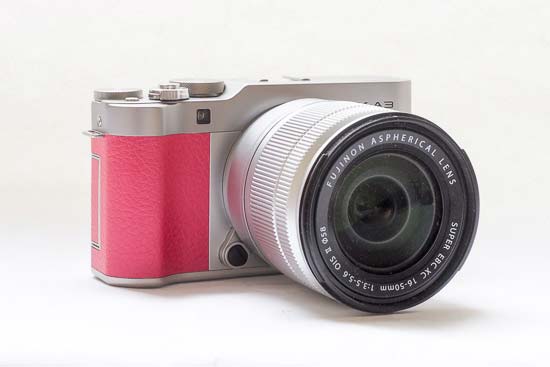 The Fujifilm XC 16-50mm F3.5-5.6 OIS II lens attached to the Fujifilm X-A3 camera
The Fujifilm XC 16-50mm F3.5-5.6 OIS II lens attached to the Fujifilm X-A3 camera
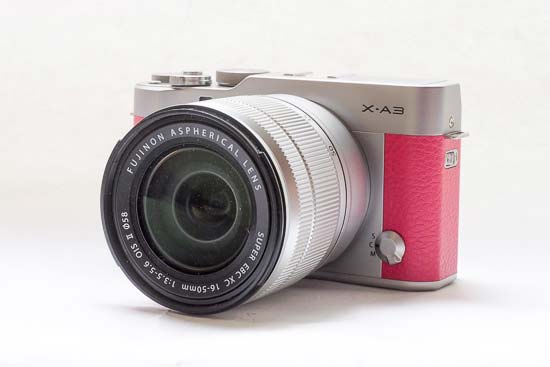 The Fujifilm XC 16-50mm F3.5-5.6 OIS II lens attached to the Fujifilm X-A3 camera
The Fujifilm XC 16-50mm F3.5-5.6 OIS II lens attached to the Fujifilm X-A3 camera
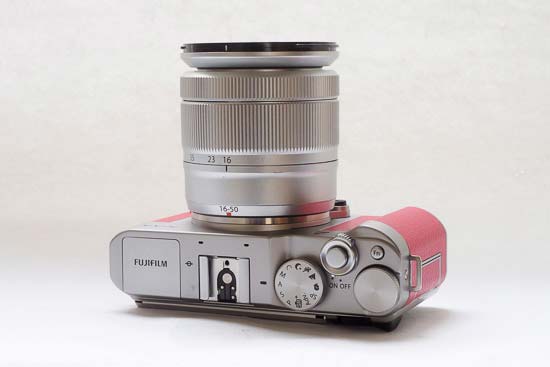 The Fujifilm XC 16-50mm F3.5-5.6 OIS II lens attached to the Fujifilm X-A3 camera
The Fujifilm XC 16-50mm F3.5-5.6 OIS II lens attached to the Fujifilm X-A3 camera
The Fujifilm XC 16-50mm F3.5-5.6 OIS II is designed to be a more affordable version of the kit lens which comes bundled with some of Fujifilm’s more expensive cameras. As such, you get a trade off. While the Fujifilm XF 18-55mm kit lens has a maximum aperture of f/2.8-4, for the 16-50mm version, the widest aperture you can achieve is f/3.5 at the wide angle, up to f/5.6 at the telephoto end.
As you might expect from a lens designed to be cheaper, it is constructed from plastic, but Fujifilm has done a good job to avoid it looking too cheap.
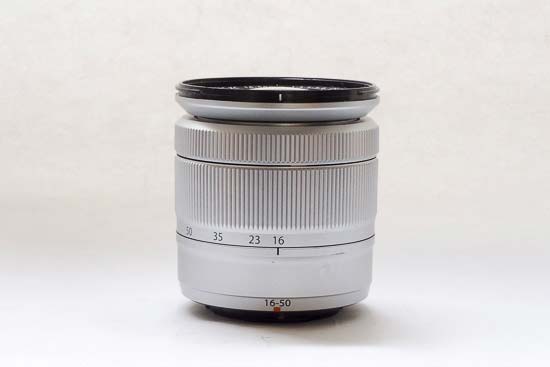 Side of the Fujifilm XC 16-50mm F3.5-5.6 OIS II lens
Side of the Fujifilm XC 16-50mm F3.5-5.6 OIS II lens
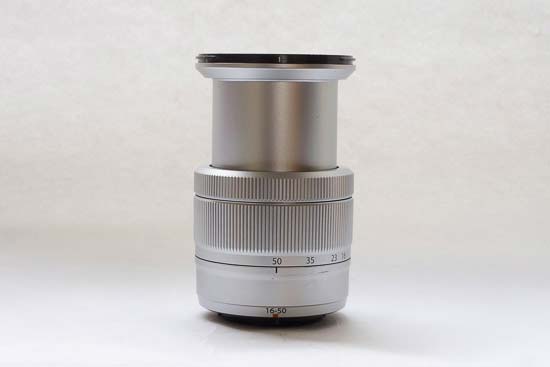 Side of the Fujifilm XC 16-50mm F3.5-5.6 OIS II lens, zoomed out
Side of the Fujifilm XC 16-50mm F3.5-5.6 OIS II lens, zoomed out
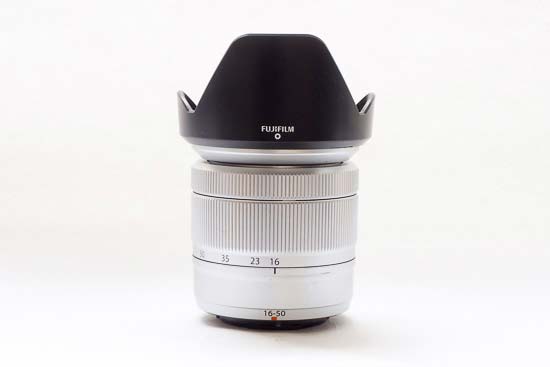 Side of the Fujifilm XC 16-50mm F3.5-5.6 OIS II lens, with the lens hood attached
Side of the Fujifilm XC 16-50mm F3.5-5.6 OIS II lens, with the lens hood attached
It is marked with focal length markers at 16, 23, 35 and 50mm to help you see what length you’re using. These are actual focal lengths, not equivalent focal lengths. To zoom the lens, there’s a large ridged zoom ring which you twist to extend the front part of the lens - the barrel extends and is at its largest when set to 50mm. The front of the lens does not rotate when you extend the lens, making it suitable for filters.
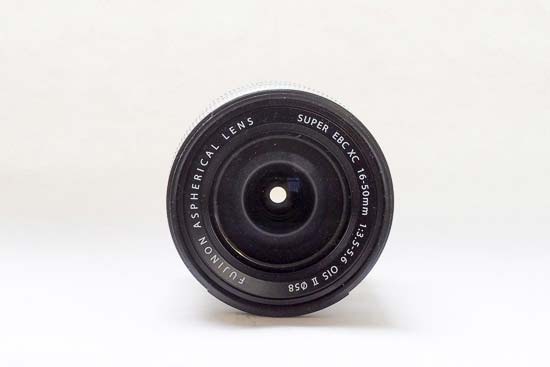 Front of the Fujifilm XC 16-50mm F3.5-5.6 OIS II lens
Front of the Fujifilm XC 16-50mm F3.5-5.6 OIS II lens
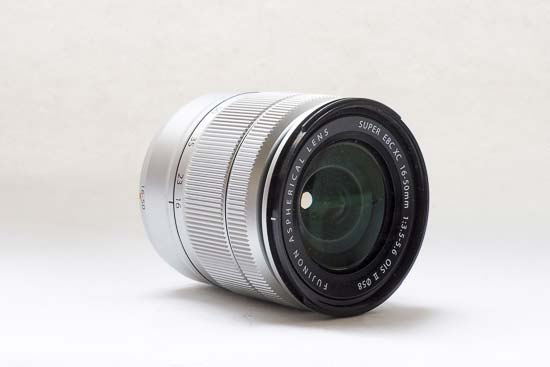 Side of the Fujifilm XC 16-50mm F3.5-5.6 OIS II lens
Side of the Fujifilm XC 16-50mm F3.5-5.6 OIS II lens
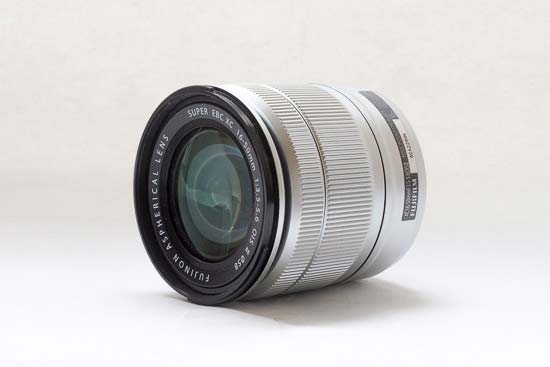 Side of the Fujifilm XC 16-50mm F3.5-5.6 OIS II lens
Side of the Fujifilm XC 16-50mm F3.5-5.6 OIS II lens
In front of the zoom ring there’s a manual focus ring - it’s a smaller ring, but it has the same ridges as the zoom ring to help you keep a good grip on it. Both the rings have a good amount of friction, but the focusing ring is a little stiffer to help you be more precise with your critical focusing. If you want to use the lens in manual focus, you’ll have to set that via the camera itself as there’s no button or switch on the lens.
The Fujifilm XC 16-50mm F3.5-5.6 OIS II lens comes with a reversible lens hood which you can attach to the front of the lens. There are markings on both the lens and the hood to help you attach it in the right place. Similarly, there’s a red mark at the back of the lens to help you line it up to the correct place to attach it to the camera.
 Side of the Fujifilm XC 16-50mm F3.5-5.6 OIS II lens
Side of the Fujifilm XC 16-50mm F3.5-5.6 OIS II lens
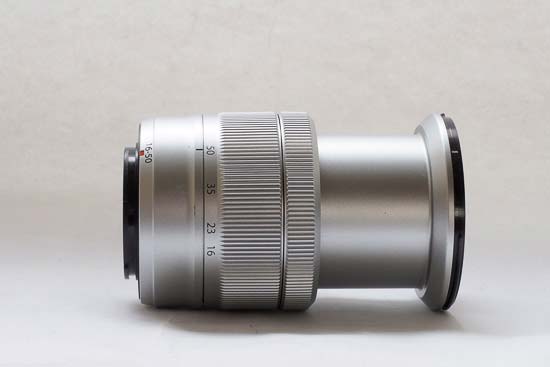 Side of the Fujifilm XC 16-50mm F3.5-5.6 OIS II lens, zoomed out
Side of the Fujifilm XC 16-50mm F3.5-5.6 OIS II lens, zoomed out
We have been using the 16-50mm f/3.5-5.6 OIS II lens with the Fujifilm X-A3, which it can be bought with as a bundle. It’s the obvious first lens to get an entry-level user started with, and being reasonably compact in size it fits well with the smaller proportions of a camera like the X-A3. The lens is lightweight, but it still has enough weight to help the camera and lens combination feel well-balanced.
Focusing
The Fujifilm XC 16-50mm F3.5-5.6 OIS II is good at focusing in a variety of different lighting conditions. If the light is particularly low it may struggle to lock onto focus - especially if you’re photographing a low contrast subject. You can get very close to the subject you want to focus on and it will still work well. It’s rare for a false confirmation of focus to be presented, but you may find you have to try a couple of times during low light, low contrast situations - and make sure that the focus assist lamp on the camera is switched on.
Focal Range
At the 16mm end of the zoom range, the Fujifilm XC 16-50mm F3.5-5.6 OIS II lens has a wide angle of view of 83.2 degrees.
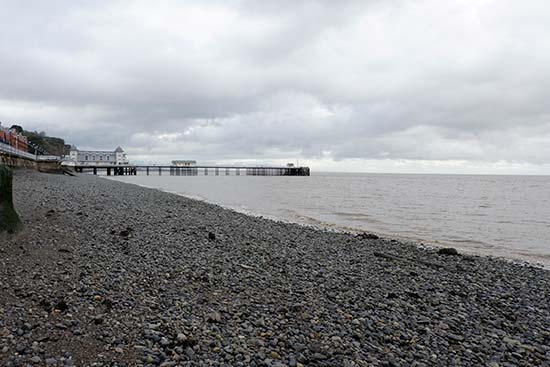 Field of view at 16mm
Field of view at 16mm
At the 50mm end, the angle of view narrows to 31.7 degrees.
 Field of view at 50mm
Field of view at 50mm
Distortion
Even when shooting at the wider focal lengths of 16mm or 23mm, distortion is very well controlled. It’s slightly more obvious when photographing geometric subjects, but is generally a good performer. You may find if you get too close to a normal subject that you’ll see some distortion at wide angle lengths.
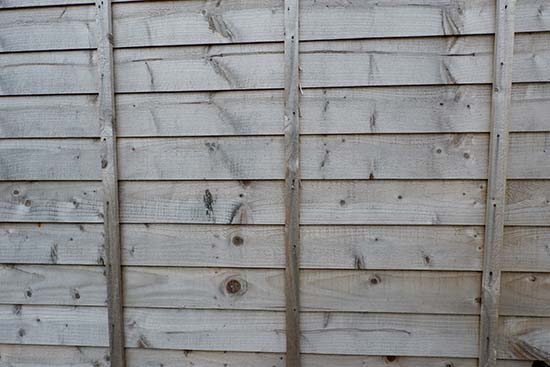 Distortion at 16mm
Distortion at 16mm
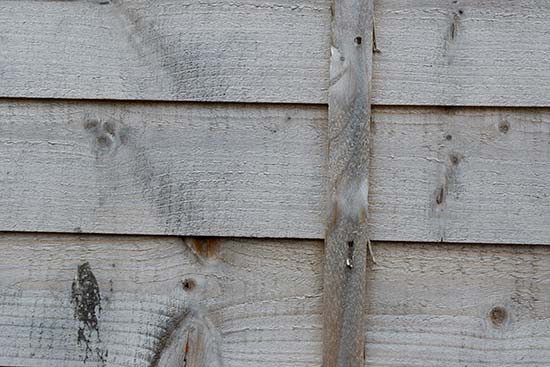 Distortion at 50mm
Distortion at 50mm
Light Fall-off
Shooting at the widest point of the lens at 16mm, it’s possible to see an almost unnoticeable amount of light drop off in the outermost corners of the image at f/3.5 (the widest aperture). The effect is almost impossible to see from f/4.0 onwards.
The other focal lengths have different maximum apertures. At 50mm, the maximum aperture is f/5.6. At this focal length and aperture combination, light drop-off is imperceptible. Remember that this test uses a white wall which would make any light drop-off very obvious - so for normal subjects you’re certainly not going to see any problems.
Vignetting is ever so slightly more pronounced at the widest apertures when shooting in raw format (as images haven’t had any lens correction applied to them in this state) - but again it’s almost impossible to see when shooting the white wall, so it’s definitely likely to be non-existent for normal subjects.
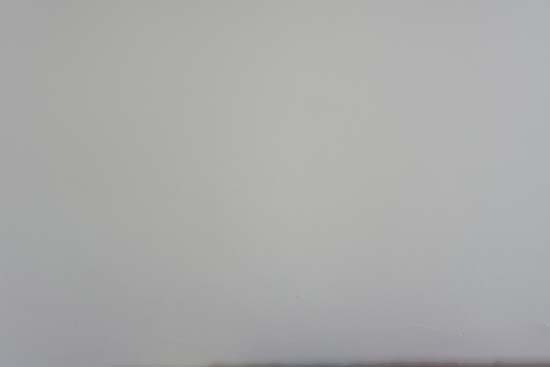 Light Fall-off at 16mm
Light Fall-off at 16mm
 Light Fall-off at 50mm
Light Fall-off at 50mm
Chromatic Aberrations
The Fujifilm XC 16-50mm F3.5-5.6 OIS II is very good at resisting chromatic aberrations. I have struggled to find any overtly obvious examples, even when examining high contrast areas of an image at 100%.
 |
 |
Macro
The minimum focusing distance of the Fujifilm XC 16-50mm F3.5-5.6 OIS II lens depends on the focal length you’re using the lens at. At the widest point (16mm), the focusing distance is 15cm, while at the furthest point is 35cm. At the wide angle of the lens the maximum magnification is 0.2x. If you don’t have a dedicated macro lens for a Fuji camera, the 16-50mm is a decent option, allowing you to get nice and close to the subject and having a good magnification ratio. We have been able to get some good macro results from the X-A3 mounted with this lens.
 Close-up performance
Close-up performance
Bokeh
As a standard, and lower cost, kit lens, the Fujifilm XC 16-50mm F3.5-5.6 OIS II doesn’t have a particularly wide aperture available. Never-the-less it is still very capable of producing some beautiful shallow depth of field effects. Bokeh is very well produced and smooth - with some creative effects available depending on what you like to shoot. Judge for yourself from the pictures below.
 |
 |
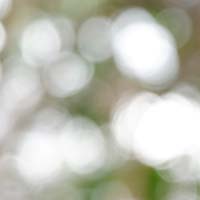 |
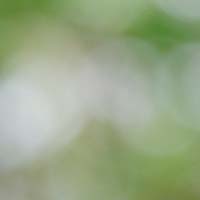 |
Sharpness
In order to show you how sharp this lens is, we are providing 100% crops on the following pages.
-
Ease
of Use -
Sample
Images -
Lens
Specs -
Rating &
Conclusion -
Main
Rivals -
Review
Roundup - Comment
